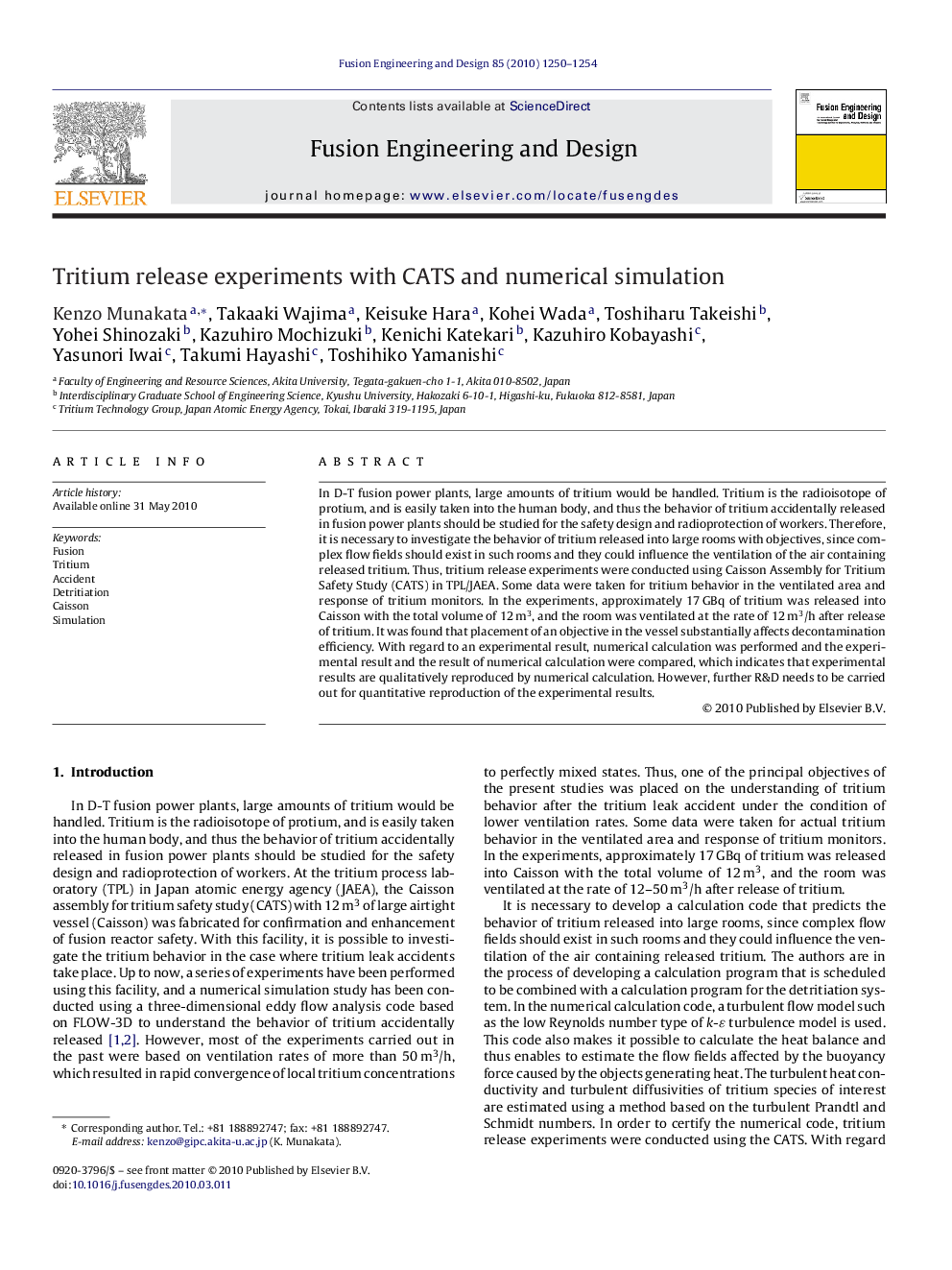| Article ID | Journal | Published Year | Pages | File Type |
|---|---|---|---|---|
| 271954 | Fusion Engineering and Design | 2010 | 5 Pages |
In D-T fusion power plants, large amounts of tritium would be handled. Tritium is the radioisotope of protium, and is easily taken into the human body, and thus the behavior of tritium accidentally released in fusion power plants should be studied for the safety design and radioprotection of workers. Therefore, it is necessary to investigate the behavior of tritium released into large rooms with objectives, since complex flow fields should exist in such rooms and they could influence the ventilation of the air containing released tritium. Thus, tritium release experiments were conducted using Caisson Assembly for Tritium Safety Study (CATS) in TPL/JAEA. Some data were taken for tritium behavior in the ventilated area and response of tritium monitors. In the experiments, approximately 17 GBq of tritium was released into Caisson with the total volume of 12 m3, and the room was ventilated at the rate of 12 m3/h after release of tritium. It was found that placement of an objective in the vessel substantially affects decontamination efficiency. With regard to an experimental result, numerical calculation was performed and the experimental result and the result of numerical calculation were compared, which indicates that experimental results are qualitatively reproduced by numerical calculation. However, further R&D needs to be carried out for quantitative reproduction of the experimental results.
